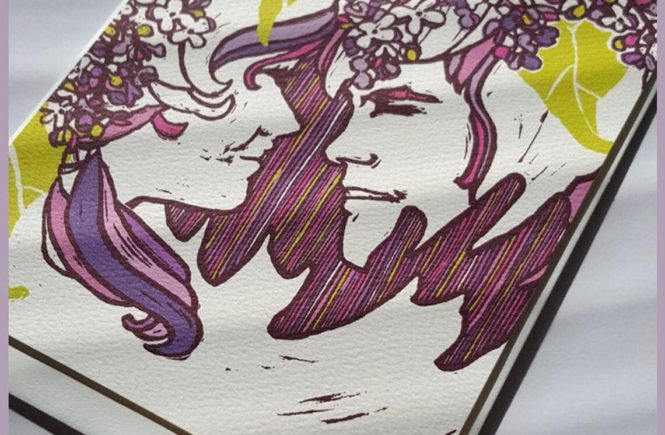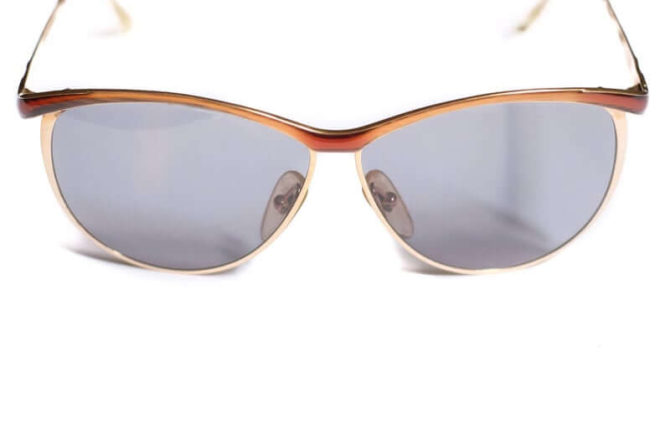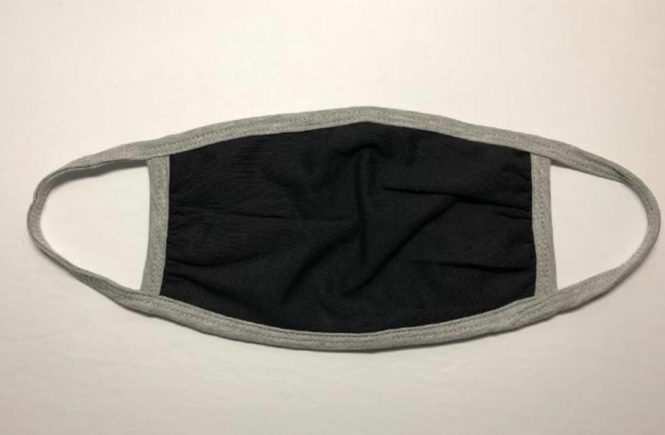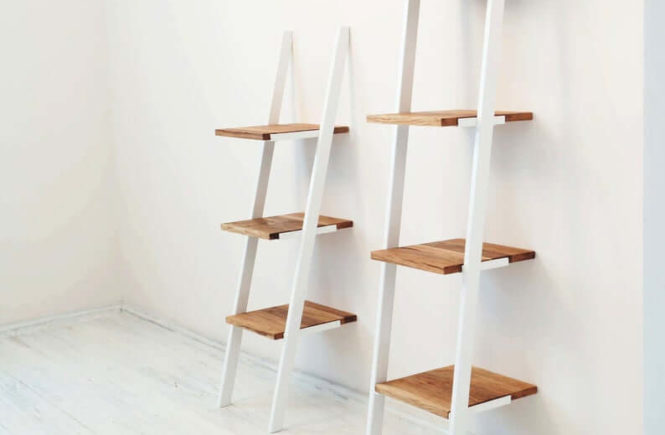[vc_row][vc_column][vc_message]
Niche : Personalized Design
Shop link : https://www.etsy.com/shop/katiedeanart
Instagram : https://www.instagram.com/katie_dean_art
Facebook : https://www.facebook.com/katiedeanart
Pinterest : https://www.pinterest.com/katiedeanart
Website : https://katie-dean.com
[/vc_message][/vc_column][/vc_row][vc_row][vc_column][vc_column_text]
Tell us something about yourself, how did you get started, do you consider yourself a crafter,maker,artist…
My name is Katie Dean, I live in Tacoma, Washington and have a letterpress studio where I print my artwork from hand-carved linoleum blocks. I’m primarily an artist, but occasionally cross over to wearing a makers hat. I graduated from Western Washington University, where I was first introduced to printmaking and letterpress printing.
How did you discover Etsy? Did you have any previous experience in selling handmade products? Why did you start selling online?
I discovered Etsy back in 2006 when it was first starting. After working for 3 years in the graphic design industry and one year traveling, I decided to start creating my own line of greeting cards. At this time, I opened my first Etsy shop under the name Little Green. At first, my time was spent wholesaling the cards and dabbling in online sales. It wasn’t until 2015 that I started learning more about how to navigate selling online and directing traffic through marketing efforts. Selling online has allowed me to reach customers around the entire country.
What products do you sell, what type of materials are used in your creations, how do you design your products, what makes your products stand out ?
I sell block printed artwork created on a letterpress with cotton paper and oil inks. While many of my earlier greeting cards were designed on the computer, over the past 8 years I’ve been designing cards using scans of the original artwork. Frequently, I will take these scans and rearrange, resize, and/or crop using Adobe Photoshop to fit the card. In addition, I design fabrics that are used for a series of kitchen towels and these patterns are created the same way as the greeting card collection. My images are mainly floral in theme and I love using bright combinations of color…I like to think my work enhances people’s lives.
[/vc_column_text][/vc_column][/vc_row][vc_row][vc_column width=”1/3″][vc_single_image image=”100001486″ img_size=”737×737″ onclick=”link_image” css_animation=”appear” bb_tab_container=””][/vc_column][vc_column width=”1/3″][vc_single_image image=”100001485″ img_size=”737×737″ onclick=”link_image” css_animation=”appear” bb_tab_container=””][/vc_column][vc_column width=”1/3″][vc_single_image image=”100001484″ img_size=”737×737″ onclick=”link_image” css_animation=”appear” bb_tab_container=””][/vc_column][/vc_row][vc_row][vc_column][vc_column_text]
How was your experience in learning to craft, are you self-taught or did you have a mentor, how long did it take for you to be satisfied with your creations
When I started out in 2006, I was creating my card illustrations from hand-drawn sketches by scanning and tracing in Adobe Illustrator. While I had some nice designs to start, there was always something missing for me in this process. In 2007, I gave birth to my first child and my professional life really slowed down. I didn’t pressure myself to produce or grow my business but decided to use it as a time to take care of my daughter and explore the missing pieces in my work. For a long time, I had a dream of getting back into the hands-on nature of the printmaking process, which brought me so much joy in college. That’s how honing in on my current style began. I switched my focus to art-making instead of card making for a period of 3 years while caring for my daughter and giving birth to a son. It was a special time and I’m so thankful I had the luxury to explore and try new ideas and techniques. Around 2012, I had an epiphany to try scanning some of the block prints into the computer to see how they would transfer to greeting cards. After feeling satisfied with a handful of new designs created this way, I was motivated to get back into marketing greeting cards alongside the artwork.
What was your original goal when you opened up an Etsy shop? What impacted your decision to start selling online? Do you consider online selling as a side-job, full-time job or extra income to pay for your hobby?
At the beginning it seemed like many artists were having immediate success setting up an Esty shop and making sales. My experience has been more drawn out. When I first started, I was confused and overwhelmed with how to start. It’s taken me a while to understand the business side of maintaining an online shop. My early experience with owning a creative business was wholesaling and art festivals. These were beneficial starting blocks for building momentum in the Etsy shop because I made many face to face connections and a lot of those customers signed up for my newsletter and have purchased online. I’m happy to say, at this time, I consider this a full-time job.
Did you have any fears or reservations before opening up your Etsy shop? Were you worried about profitability or product competitiveness? What are some concerns and questions you had before you got started? How did you overcome them?
I wouldn’t say I had any fears or reservations, but I can definitely say I had a good deal of confusion, frustration, and doubt. A lot of sellers say they feel overwhelmed with the challenge of standing out in a saturated marketplace, myself being one of them. For many years that kept me from giving my online business 100% of my attention and why it was easier to focus on face to face sales. I was having success at festivals, but about 3 years ago the difficulty of creating full-time income from these events really dawned on me. So that was the beginning of dusting off product photos, reevaluating the copy on my listings and starting to research tips from experts who had found success.
How long did it take for you to get your first sale? Did you ever thought you would make a lot of sales in the first year? What was a goal you were hoping for? How many sales an average you get per week?
After really promoting my shop about 3 years ago, it’s been a steady increase. At the beginning, most of my sales were coming from customers who already knew me. Over time the scales have tipped and now I’m receiving more orders from strangers in other parts of the country. It’s definitely not been an overnight success story, but I’m standing at a comfortable 3% conversion rate after spending time learning how to read the stats and getting tips on SEO, marketing, and implementing it all to optimize my shop. On average, I get about 2 orders a day.
Do you have a job outside Etsy? If not, are you able to commit full-time to online selling? How does your typical day look like? How do you manage time?
Currently, I split my time between my online shop and being a mother to a 10 and 13-year-old. I don’t keep track of my daily hours, but most days I’m doing something that is connected with growing a business. Over the years, I’ve become better at time management. I’m a regular list maker and use a customized calendar for the year ahead, which I assess during the slow month of January to prepare a big picture approach for staying on track. I’ve had to learn the art of saying “no” to ideas or projects that may take my focus away from the master plan. Self-discipline has been the hardest part for someone who loves to create and pursue new ideas. Running a business has a different angle of creativity that I’m learning to enjoy, but it’s not the same as spending time in the studio.
How does your manufacturing process looks like for e.g. your best selling product? Do you create products ahead of the orders? Do you customize your products, if so how? What are tools that you are using in manufacturing process?
I create all of my own artwork by hand and don’t foresee that changing in the future. The greeting cards have been printed in house with a high-end digital printer, but in the past month, I’ve been in contact with a local printer for outsourcing this part of my workload. As of late, the best-selling products have been my floral blank greeting card sets and my assorted sympathy card sets. During the Christmas season, my holiday card sets and kitchen towels do very well. To manufacture the towels, I send digital files to Spoonflower and they send yardage back to me. After that, I pre-wash, cut, and sew the edges myself. During busy stretches, I have a few people who I pay to help with the sewing.
What is the biggest impact on profitability of your shop? How expensive are the materials you use? How do you price your products?
To price my cards, I looked at industry standards for pricing. Greeting cards are a really great bread and butter part of my business because they have a high margin. The towels are really fun to create and I love offering something that customers can use every day to brighten up their kitchen. The trick with the fabric is that the materials are more costly than paper and the labor involved takes more time. I would like to offer these products for wholesale, but at this point, it’s a challenge. Perhaps if I can find a good manufacturing resource to lower costs that will allow me to branch out, but until my sales increase with towels, I don’t see that happening. The artwork is higher priced and that’s mainly because of the amount of labor. Each color is created from a separate block carving and printed one at a time by hand with my press. This is what I consider my labor of love!
What inspires you when you’re creating? How do you get ideas for new products? What are some methods or tools you use to get creative?
I’ve always been inspired by natural themes. Exploring nature has been a big part of my life. When I get outside, I bring my sketchbook. I wish I could say I’m a daily drawer, but it’s been challenging to find the time with all the aspects of maintaining a business. I have a long list of backlogged ideas and perhaps someday these ideas will come to life. I have a mountain series that I’d like to put to use for a new notecard set, as well as some sketches I’ve been collecting of mushrooms and bonsai. Most of my new towel designs that will be coming out this holiday season are created from designs I’ve had available. One trick I’ve used is the “art of recycling.” I take a lot of already completed work and reorient it to make something new.
Do you ship your product internationally? How do you handle postage pricing? What is average time it takes from the order to the delivery? Do you use free shipping? If so, why? How do you package your products?
I haven’t had many international sales, but am listed as a seller who will ship internationally. On average, I ship orders within 3-5 days from the time of order. I offer free shipping and made that switch when Esty announced this was their preferred policy. I calculate an average shipping cost into all of my products. With respect to packaging, all of my prints and cards are carefully sandwiched between cardboard to protect them from getting bent. Towels are a bit easier to package with a piece of tissue paper.
[/vc_column_text][/vc_column][/vc_row][vc_row][vc_column width=”1/3″][vc_single_image image=”100001482″ img_size=”737×737″ onclick=”link_image” css_animation=”appear” bb_tab_container=””][/vc_column][vc_column width=”1/3″][vc_single_image image=”100001481″ img_size=”737×737″ onclick=”link_image” css_animation=”appear” bb_tab_container=””][/vc_column][vc_column width=”1/3″][vc_single_image image=”100001480″ img_size=”737×737″ onclick=”link_image” css_animation=”appear” bb_tab_container=””][/vc_column][/vc_row][vc_row][vc_column][vc_column_text]
Are you worried about competitors? Does it impact your business in any way? If there are a lot of similar products, how do you make your own stand out?
I haven’t worried about competitors. I mainly focus on my brand and what is different and unique about what I offer from my competitors. It’s taken time to figure out the brand and marketing position and it’s something that is still evolving…I’m beginning to think it always will. With that in mind, I don’t get too wrapped up in having all the answers right away. The process has been more about investigating and testing. If something seems to work, keep it going, but if it produces few results, maybe reassess. I’ve used photography, specific listing tags and observing my competition as a way to spark ideas that will help me stand out.
How do you deal with disputes or bad rating/feedback? How do you manage presale and post sale communication and customer satisfaction?
I like to show my customers appreciation and include a small gift enclosure and hand written note with each order. I try hard to answer any messages within 24 hours. With orders above $15, I always include a tracking number to cut down on lost orders or false disputes from customers. So far, I’ve been lucky and have only had one bad rating on a t-shirt sizing issue. With my product photography, I try and illustrate size to the viewers so that cuts down on misunderstandings.
Has selling on Etsy changed your life in any way? If so, how? Did you ever thought you would get this far with your shop? Have you ever been stressed dealing with customers and manufacturing products? How did you deal with that?
The efforts I’ve put into my online shop over the past several years has paid off exponentially. When the Covid pandemic happened, all of my face to face events were canceled. Now that I’m marketing my business 100% online and seeing positive results from these efforts, I can safely say that Esty has saved my business. I’m very fortunate that my sales have been a steady and manageable increase. I’ve been training my daughter and her friend to help me fill orders to prepare for the winter season. With the cancellation of holiday art shows, I’m completely relying on my Etsy shop this year.
How important is social media for your shop? What are some common tactics you use to promote your products? Do you spend money on ads outside of Etsy? How do you generate excitement/hype around your products?
I’m consistent with social media but haven’t seen a tremendous amount of traffic coming from Facebook or Instagram. Traffic coming from Pinterest has been more consistent as I learn how to use this tool for marketing, but it is time consuming. I’ve had an active newsletter for the past 8 years and it’s been a great way to reach my primary audience about new artwork, seasonal cards, and new fabric designs. Recently, I started writing a series of art letters on my website and those seem popular on Pinterest and they help me reflect on my creative journey and share what I’ve learned.
What are some things you don’t like about Etsy? If you could talk to the CEO of Etsy what recommendations would you tell him to improve sellers and customers satisfaction?
Sometimes I’ve been confused and frustrated about tracking fees and taxes. I believe they made a switch to the platform recently, but the information can be challenging to study. It was also hard to see the new video feature. I’m sure for some sellers this will be an essential tool in showcasing products, but it’s a lot of time to add on top of keeping good photography. I’ve heard a rumor that shops with video will get priority in search…I really hope this isn’t true!!
What are some things you did to set your shop for success on Etsy? What is one lesson you learned the hard way?
I can’t tell you how many times I’ve taken product photography in order to showcase my items in the best light. It’s been a long haul, but after much trial and error, I’ve finally found a process that works for me and is less time consuming. Recently I’ve learned more about search analytics and that’s been a huge insight to position myself in search. But like photography, it’s taken some trial and error to focus on using specific keywords for search and I’m still learning and tinkering.
What piece of advice would you give to new or established sellers or those considering to sell on Etsy? How can they avoid beginners mistakes?
There are a lot of overnight success stories out there and it’s easy to get caught up in that. I would stress the importance of consistency and developing tricks to take emotions out of selling the items you create. For beginners, there’s a lot to do when setting up a shop, so it’s helpful to break things up into smaller tasks and then create a general timeline to keep focus. That way you can stay realistic and avoid frustration. Some sellers get caught in feeling the need to pack their shop with a ton of items. I was given a tip to focus on one flagship item and no more than 2 sub flagship items. This has been a huge game changer for me as it’s allowed me to focus my efforts and target my products. You also don’t need 100 listings to be successful. I think focusing on creating 10 really great listings to start is a way to avoid burn out. It’s going to be a constant evolution. If you are still having some fun in the process, then you’re on your way to success. If it becomes stressful, that’s a good sign to take a break.
Anything you wish to add, feel free to do so here. We value your opinion
I currently have an “Art of Letter Writing” Campaign on my homepage where you can receive a complimentary greeting card during this time of social distancing. www.katie-dean.com
[/vc_column_text][/vc_column][/vc_row]




